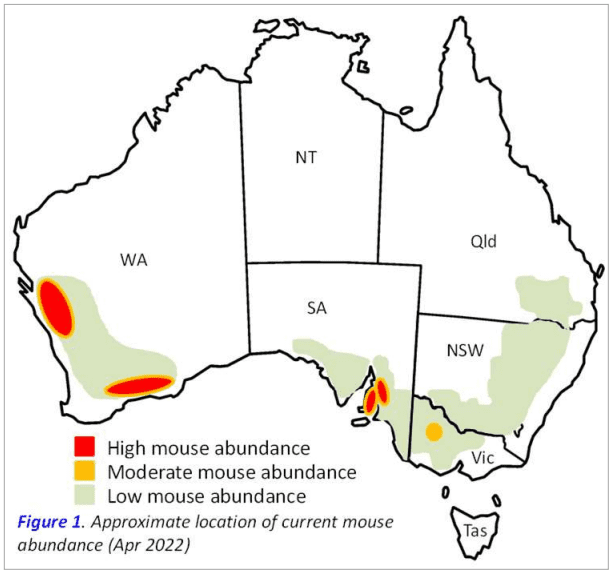
Growers are being urged to be on the look out for mice in their paddocks
GRAIN Producers Australia (GPA) is urging growers to be alert and prepared to take action, amid increasing reports of mouse activity occurring throughout the nation’s grain producing areas.
GPA southern director and special projects manager, Andrew Weidemann, said with planting underway in most cropping regions, growers are being warned to monitor their paddocks closely for any signs of mice and remain vigilant during seeding and the growing season.
Mr Weidemann said patchy activity has been reported in his home farming state of Victoria and other grain producing states.
But with high numbers reported in parts of Western Australia and South Australia, experts are now urging growers to take action at sowing in order to minimise losses, he said.
“Many growers have already started baiting, or are about to start their programs, in response to what’s happening with mice activity in their own paddocks,” Mr Weidemann said.
“As we saw with last year’s mouse plague, a serious outbreak can significantly impact crop returns and the general wellbeing of our regional communities.
“That’s why we need to remain vigilant with monitoring our paddocks and be proactive with control programs, to minimise mouse numbers and limit damage, as best we can.”

CSIRO and GRDC’s Mouse Activity Report from April showed high mouse abundance in parts of WA and SA. Photo: Mouse Alert
Seek expert advice
GPA northern director and Moree grower, Matthew Madden, said it was important to seek the advice of experts, with mouse populations reported in some areas of New South Wales and Queensland.
Mr Madden said growers experiencing mouse activity can report what they observe to the Mouse Alert website which also provides professional guidance and tips on how best to respond.
“We all know high grain prices are on offer this season, but record high input costs such as fuel and fertiliser are also adding to our production risks,” Mr Madden.
“That’s why we need to take whatever steps we can to minimise any potential losses – especially controlling mice numbers.”
Mr Weidemann said experts are also recommending growers use ZP50 mouse bait to ensure the best chance of success with their baiting programs.
He said this ZP50 option was provided to support growers with stronger crop protection options through an emergency use permit issued to GPA last year, which remains in place.
“Whether you’re using ZP50 or any other type of mouse bait, it’s important to remember to always follow to label instructions when baiting to do the best job you can with the product,” he said.
Source: Grain Producers Australia

I believe there is only one researcher recommending ZP50 bait. We have great results with ZP25, monitoring is the key and bait when increased activity is noticed.